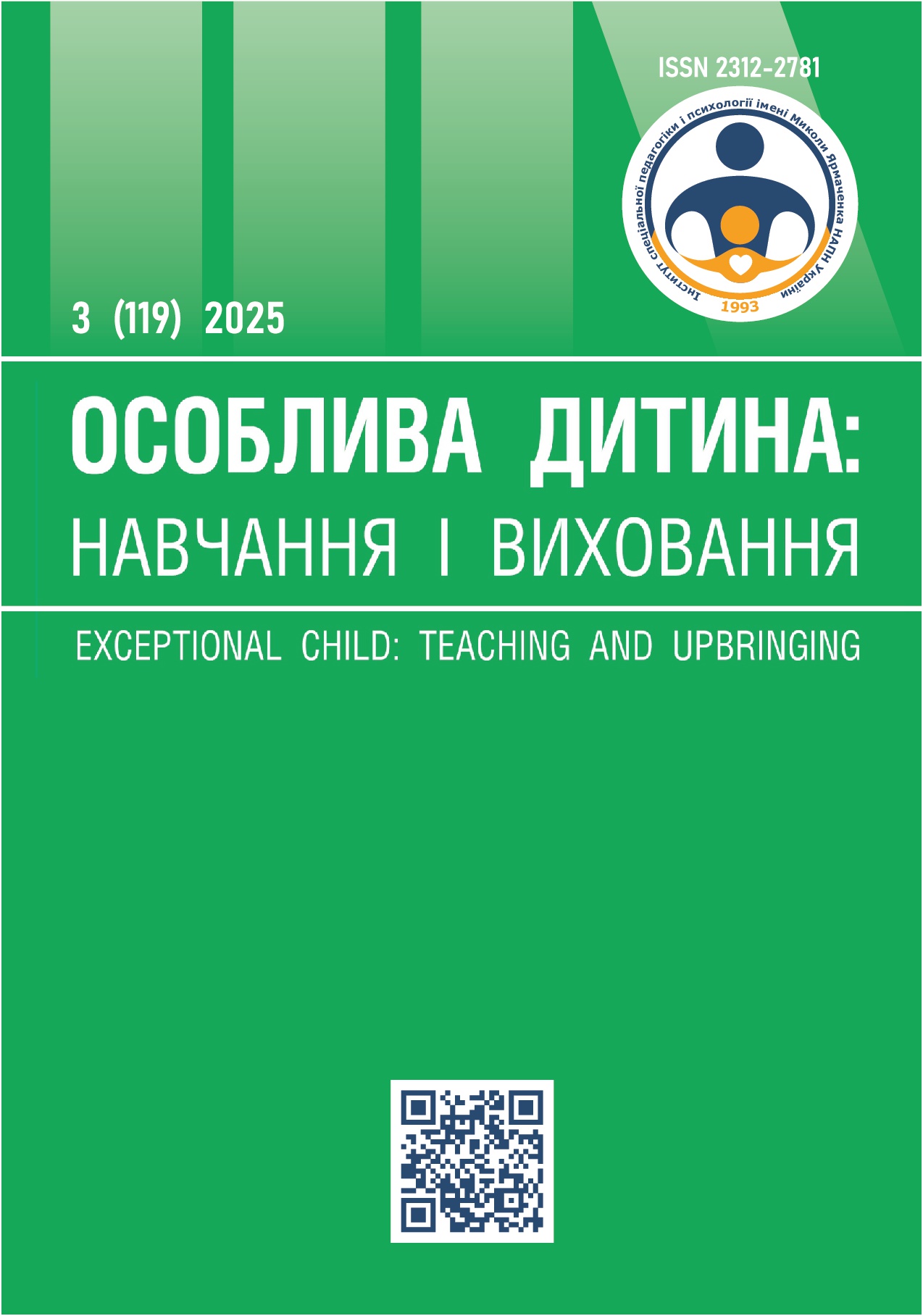EMPIRICAL STUDY OF THE EMERGENCE OF GENDER STEREOTYPES IN PRESCHOOL CHILDREN WITH INTELLECTUAL DEVELOPMENTAL DISABILITIES
Abstract
The purpose of the article is to determine the level of formation of gender stereotypes in preschool children with intellectual disabilities in order to identify the true situation of children's diverse gender awareness.
The empirical study used such methods as a diagnostic interview, a survey, a study of children's activities, as well as observation and data processing methods, namely, building histograms, analyzing and synthesizing the data obtained, and systematizing them.
In the course of the study, three methods were used to identify gender stereotypes, the level of their assimilation and influence on the thinking and worldview of preschoolers with intellectual disabilities.
The analysis of the results of the methodology for determining children's gender attitudes (V. Kagan) showed that the group of preschoolers with intellectual disabilities under study has formed a gender identity, as well as acceptance of their own gender and unwillingness to change it. Among the gender roles presented in the surveys, the most attractive for children were the roles of father (for boys) and mother (for girls), which may indicate a desire to imitate the gender behavior of authoritative adult representatives of their gender.
The gender stereotypes test (A. Kryvorotko) revealed that most preschoolers in this group of children have gender stereotypes about the choice of toys, the distribution of responsibilities and equality in the rights of men and women according to their biological sex.
In addition, an analysis of the results of the author's methodology «Gender Stereotypes in the World of Professions» by I. Karakai revealed the presence of professional gender stereotypes in this group of children, which are manifested in the correlation of professional activities with a certain gender.
In turn, the observation of preschoolers with intellectual disabilities confirmed the presence of the above stereotypes. In contrast, this study has shown that despite the presence of gender stereotypes in most children of this group, their interpersonal interaction does not suffer. Children show respect and care for each other.
Thus, it has been established that the preschoolers we surveyed have formed gender stereotypes that relate to the choice of toys and clothes in accordance with the child's gender, the distribution of responsibilities in the family between men and women, equality of rights between opposite sexes, and the presence of professional gender stereotypes.
References
Особлива дитина: навчання і виховання. №3(119). 2025. с. 288-307


